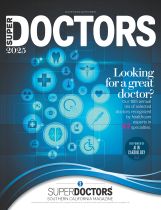Centers for Disease Control and Prevention (CDC)
January 24, 2020
CDC is closely monitoring an outbreak of respiratory illness caused by a novel (new) coronavirus (termed “2019-nCoV”) that was first detected in Wuhan City, Hubei Province, China and which continues to expand. Chinese health officials have reported hundreds of infections with 2019-nCoV in China, including outside of Hubei Province. Infections with 2019-nCoV also are being reported in a growing number of countries internationally, including the United States, where the first 2019-nCoV infection was detected in a traveler returning from Wuhan on January 21, 2020.
Chinese health authorities were the first to post the full genome of the 2019-nCoV in GenBankexternal icon, the NIH genetic sequence database, and in the Global Initiative on Sharing All Influenza Data (GISAIDexternal icon) portal, an action which has facilitated detection of this virus.
Coronaviruses are a large family of viruses, some causing illness in people and others that circulate among animals, including camels, cats and bats. Rarely, animal coronaviruses can evolve and infect people and then spread between people such as has been seen with MERS and SARS.
When person-to-person spread has occurred with MERS and SARS, it is thought to have happened via respiratory droplets produced when an infected person coughs or sneezes, similar to how influenza and other respiratory pathogens spread. Spread of MERS and SARS between people has generally occurred between close contacts. Past MERS and SARS outbreaks have been complex, requiring comprehensive public health responses.
Early on, many of the patients in the outbreak in Wuhan, China reportedly had some link to a large seafood and animal market, suggesting animal-to-person spread. However, a growing number of patients reportedly have not had exposure to animal markets, suggesting person-to-person spread is occurring. At this time, it’s unclear how easily or sustainably this virus is spreading between people.
Both MERS and SARS have been known to cause severe illness in people. The situation with regard to 2019-nCoV is still unclear. While severe illness, including illness resulting in a number of deaths has been reported in China, other patients have had milder illness and been discharged.
There are ongoing investigations to learn more. This is a rapidly evolving situation and information will be updated as it becomes available.
Risk Assessment
Outbreaks of novel virus infections among people are always of public health concern. The risk from these outbreaks depends on characteristics of the virus, including whether and how well it spreads between people, the severity of resulting illness, and the medical or other measures available to control the impact of the virus (for example, vaccine or treatment medications).
Investigations are ongoing to learn more, but person-to-person spread of 2019-nCoV is occurring. It’s important to note that person-to-person spread can happen on a continuum. Some viruses are highly contagious (like measles), while other viruses are less so. It’s not clear yet how easily 2019-nCoV spreads from person-to-person. It’s important to know this in order to better assess the risk posed by this virus. While CDC considers this is a very serious public health threat, based on current information, the immediate health risk from 2019-nCoV to the general American public is considered low at this time. Nevertheless, CDC is taking proactive preparedness precautions.
What to Expect
More cases are likely to be identified in the coming days, including more cases in the United States. Given what has occurred previously with MERS and SARS, it’s likely that some person-to-person spread will continue to occur.
CDC Response
- CDC is closely monitoring this situation and is working with WHO.
- CDC established a 2019-nCoV Incident Management Structure on January 7, 2020. On January 21, 2020, CDC activated its Emergency Response System to better provide ongoing support to the 2019-nCoV response.
- On January 23, 2020, CDC again raised its travel alert for the coronavirus outbreak. The travel notice for Wuhan City was raised from Level 2: Practice Enhanced Precautions to Level 3: Avoid Nonessential Travel. CDC also issued a Level 1: Practice Usual Precautions for the rest of China.
- CDC also is conducting entry screening of passengers on direct and connecting flights from Wuhan, China to five major airports: Atlanta (ATL), Chicago (ORD), Los Angeles, (LAX) New York city (JFK), and San Francisco (SFO).
- CDC issued an updated interim Health Alert Notice (HAN) Advisory to inform state and local health departments and health care providers about this outbreak on January 17, 2020.
- A CDC team has been deployed to support the ongoing investigation in the state of Washington in response to the first reported case of 2019-nCoV in the United States, including potentially tracing close contacts to determine if anyone else has become ill.
- CDC has developed a real time Reverse Transcription-Polymerase Chain Reaction (rRT-PCR) test that can diagnose 2019-nCoV. Currently, testing for this virus must take place at CDC, but in the coming days and weeks, CDC will share these tests with domestic and international partners through the agency’s International Reagent Resourceexternal icon.
- CDC also is sequencing the entire genome of the virus from the first reported case in the United States and plans to upload the sequence to GenBank and GISAID when completed.
- CDC also is growing the virus in cell culture, which is necessary for further studies, including for additional genetic characterization.

